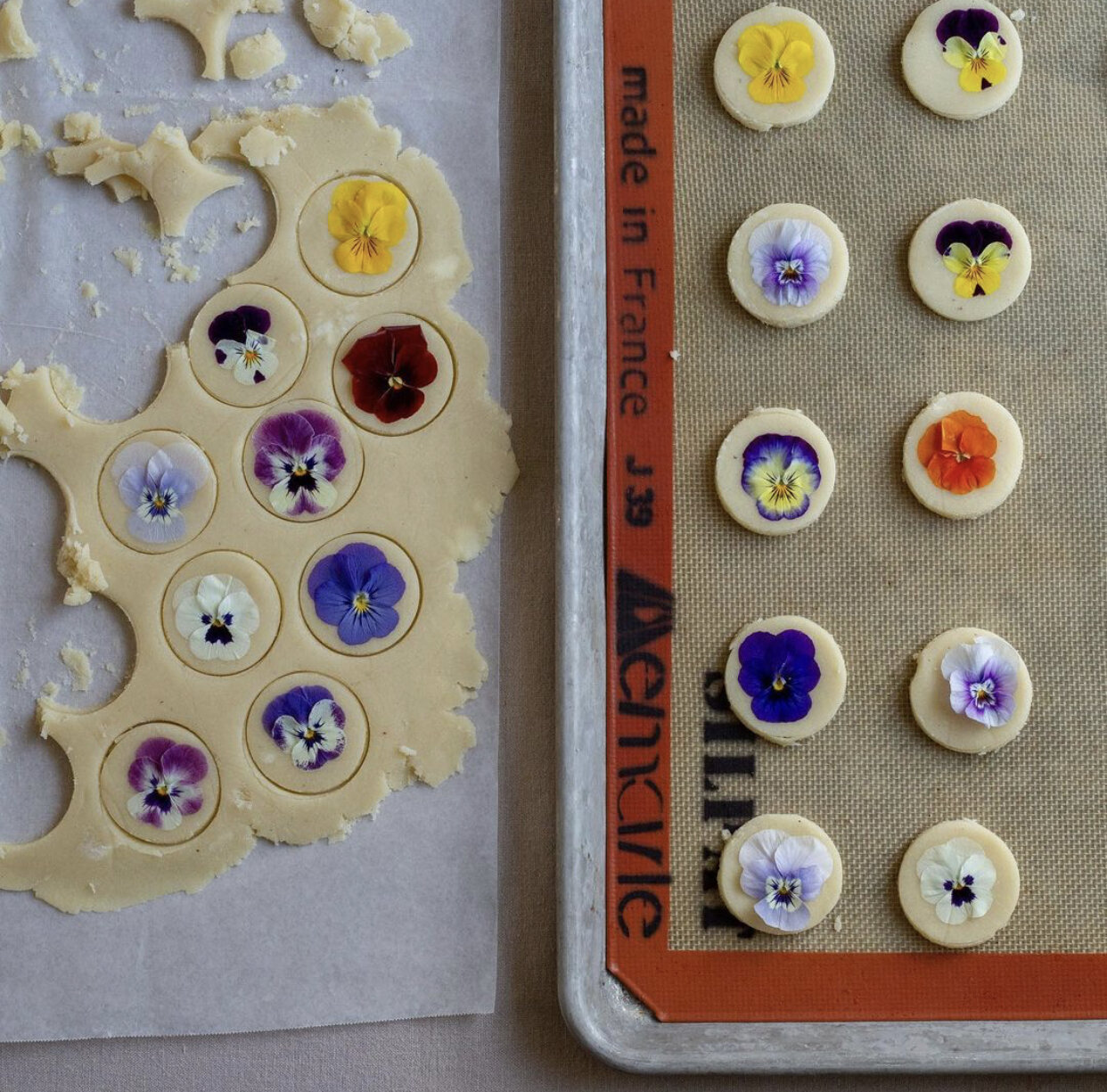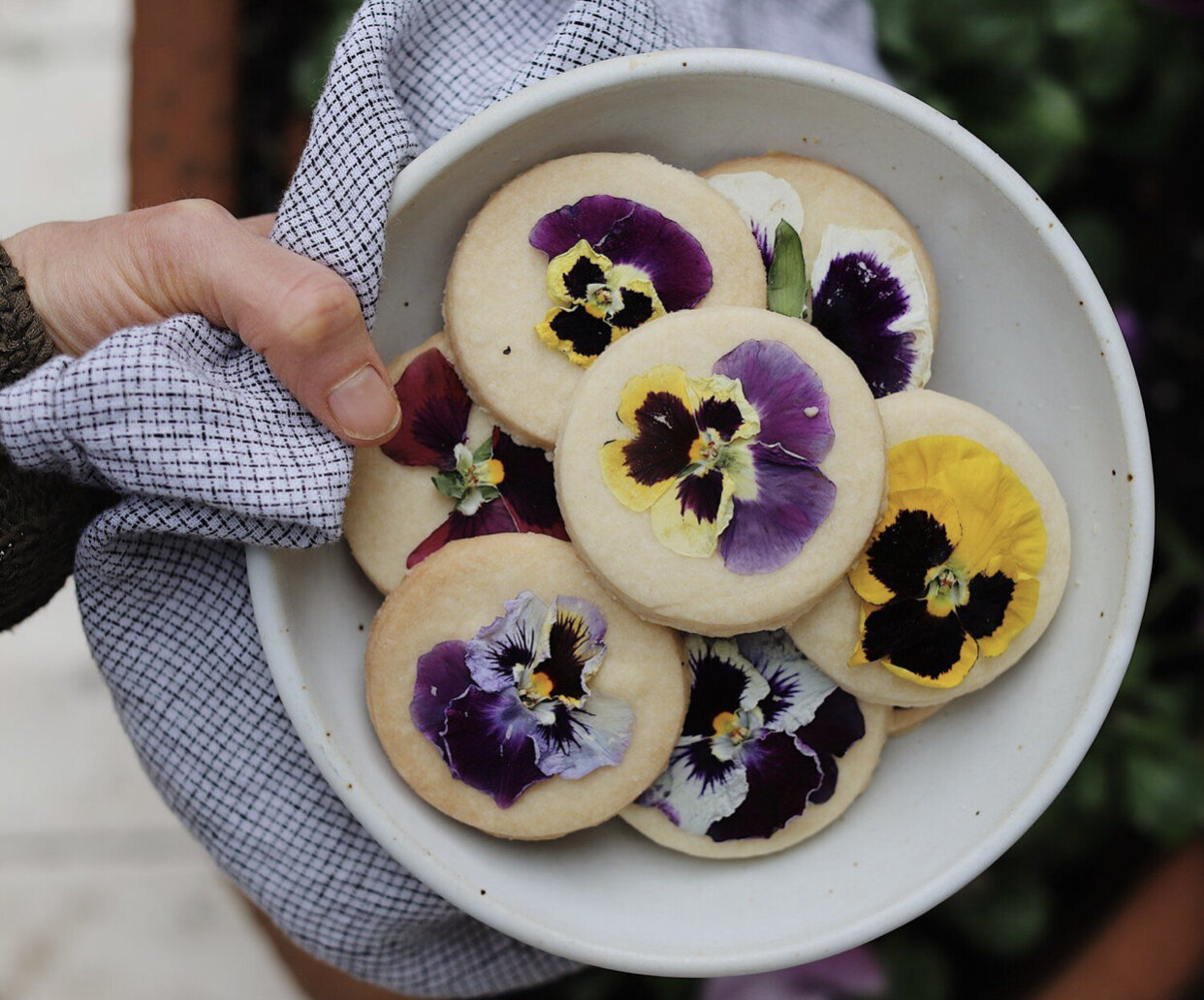Edible Flower Shortbread Cookies for the Dormition of the Theotokos
The Feast of the Dormition is often associated with the blessing of flowers and herbs, because the fragrance of the flowers and herbs reminds us of the scent of holiness, which filled the empty tomb of the Theotokos. In many places it is still the custom to bring herbs and flowers on this feast day to be blessed. You can read more about the Feast of Dormition in my Dormition Fast Guide!
As a beautiful tribute to the Theotokos, and the Feast of Dormition, I wanted to share a recipe for making edible flower shortbread cookies! I first saw these when my Presvytera friend @rebekahbethany shared them on Instagram. With her permission, and using her gorgeous photos, I want to share with you how to make them! Aren’t they stunning? Be sure to follow her on Instagram!
Here is how you can make Edible Flower Shortbread Cookies!
What You’ll Need For This Cookie Recipe
Classic Shortbread Cookies Recipe with Edible Flowers
Prep Time 10 mins, Cook Time 15 mins, Total Time 25 mins, Servings: 30-35 cookies
Ingredients
1 cup ( 8oz/240g) ) butter (room temperature)
1/2 cup (2oz/60g) powdered sugar (sifted)
2 cups (10oz/300g) all purpose flour
Edible Flowers (can be found in the herb section in many grocery stores)
Instructions
Preheat your oven to 350°F (180°C) and line a baking tray with parchment paper.
In a large bowl cream together the soft butter and sugar with an electric mixer until light and fluffy.
Place the flour, powdered sugar, salt, and butter into the bowl of a food processor and pulse until all of the butter is incorporated, about 10 to 15 one-second pulses, but could be more depending upon your food processor. It’s ready when the mixture looks like wet sand and clumps together when pressed. Stop when the mixture begins to climb up the bowl.
Bring the dough together: Dump everything onto the counter and gently press it together into a crumbly mound. I use a flexible bowl scraper to scoop and press the mound together at first, then knead the dough a few times and form it into a square shape.
Roll the dough out on a well-floured surface to 1/4- to 1/2-inch thickness (depending on how thick you like your cookies) and use a round biscuit cutter to cut out circles
Using the cookie cutter as a guide, place flowers in center of the cookies. Next, cover with parchment paper and gently press flowers into the dough with a rolling pin.**
Transfer the cookies to one of the parchment-lined baking sheets. Chill the cookies on the sheet pan in the freezer for 15 minutes or until the cookies are solid to the touch. Transfer the frozen cookies, in batches, onto the other baking sheets, leaving about 1/2 inch between each cookie.
Bake the cookies, one pan at a time, for 15-18 minutes, or until the cookies are dry to the touch and the bottoms just begin to turn golden. Keep a close eye on the flowers to make sure they don’t get too dark. Better under cooked than over!
Cool and store: Remove from the oven and cool on a rack before transferring to a container for storage. The baked and cooled cookies can be stored in an airtight container for several days.
** White violas don’t do well in the oven. There will definitely be a few that don’t make it through the oven, so make a few more than you need. While violas are edible, make sure that they haven’t been treated with any toxic chemicals. Grocery stores often sell these.


















If you’re new to creating a Pascha basket, welcome! I’m glad you found this little blogpost. My hope is to share an example of a Traditional Pascha basket, which stems from the Russian tradition, and share what each item symbolizes.